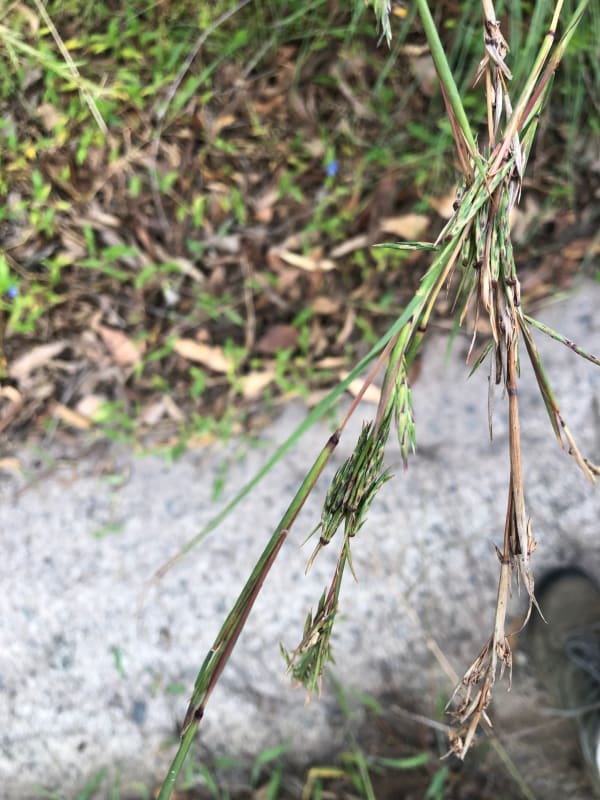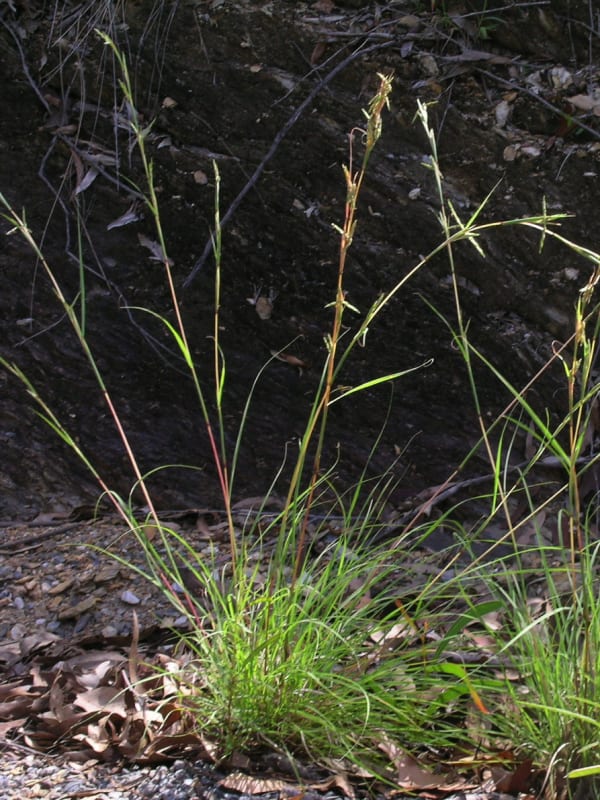By Emma Rooksby, co-ordinator of the Growing Illawarra Natives website
There are dozens of grasses native to the Illawarra region, not to mention at least as many introduced species. Many are tricky to identify and grasses as a category are often put in the 'too hard basket.' But there are a few that are very distinctive and easily recognised.
Barbed Wire Grass (or Cymbopogon refractus) is one of those easily recognised grasses, at least when it is in flower or fruit. Just as described, the mature inflorescences and the fruit form twisty shapes that look very much like the barbs on barbed wire, particularly when the fruit and stems dry off to a grey-grown colour.
I spotted the plants below growing on a roadside verge near Seven Mile Beach, happily mixed in with other native grasses beneath some massive old Forest Red Gums (Eucalyptus tereticornis).

The odd thing though is that, although Barbed Wire Grass is quite easily recognisable, it just isn't that easy to spot. This is partly due to it being fairly uncommon on the relatively rich soils of the coastal plain and escarpment, as it prefers poorer soils.
It is, to be honest, also partly because the flower and seed heads are by far the most recognisable element! Without them what you get is basically a mid-sized clump of grass, unless you care to investigate more closely, in which case you will be looking at fine details that don't belong in an article like this (fascinating though they are).
Some great places to spot Barbed Wire Grass locally are quite accessible. Wollongong Botanic Garden has plants covered with flowers and seed heads at the moment; check out the Dryland Garden area where it's growing along several of the paths. And Croom Reserve in the Shellharbour area has this species in its woodland portion, where it's widespread but not particularly common.
An interesting feature of Barbed Wire Grass is the lemony-slash-gingery scent of its leaves when crushed. It's not strong but it is distinctive and quite pleasant, and it gives a clue to this species' relationship to the much better-known Cymbopogon citratus, aka Lemongrass, a herb widely used for its citrusy flavour. I have not tried using Barbed Wire Grass leaves as a tea and don't recommend you go pulling leaves off plants by the side of the road to try them out, but I reckon they'd produce a nice, mild-flavoured drink.
If you want to try it, pick up a plant from Wollongong Botanic Garden's nursery and grow it in a sunny dryish spot in a garden, or in a pot of well-drained potting mix in a north- or east-facing area. It is shorter and more delicate than Lemongrass and will mix nicely with other native grasses like Kangaroo Grass (Themeda triandra) and Hedgehog Grass (Echinopogon ovatus), which also have interesting seed heads.






